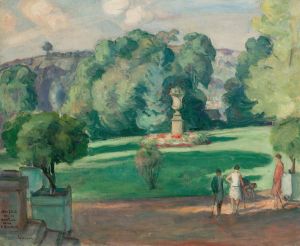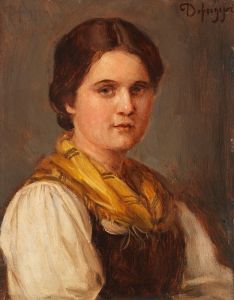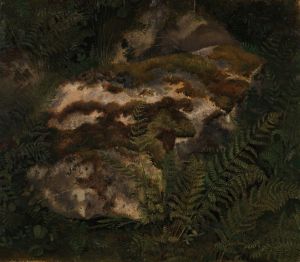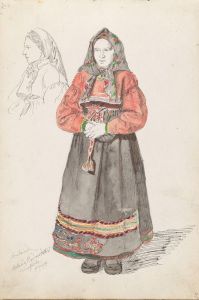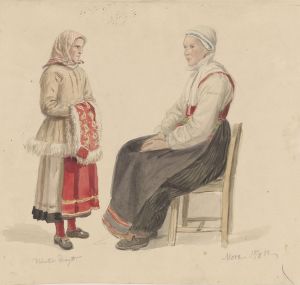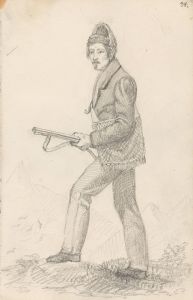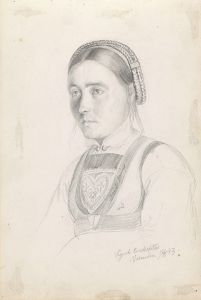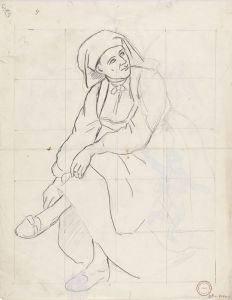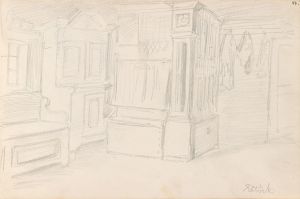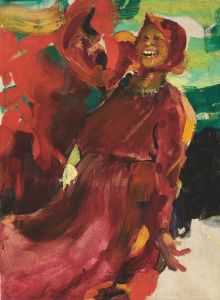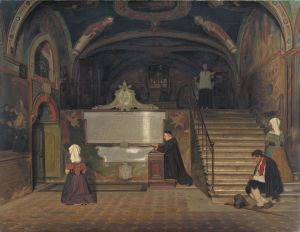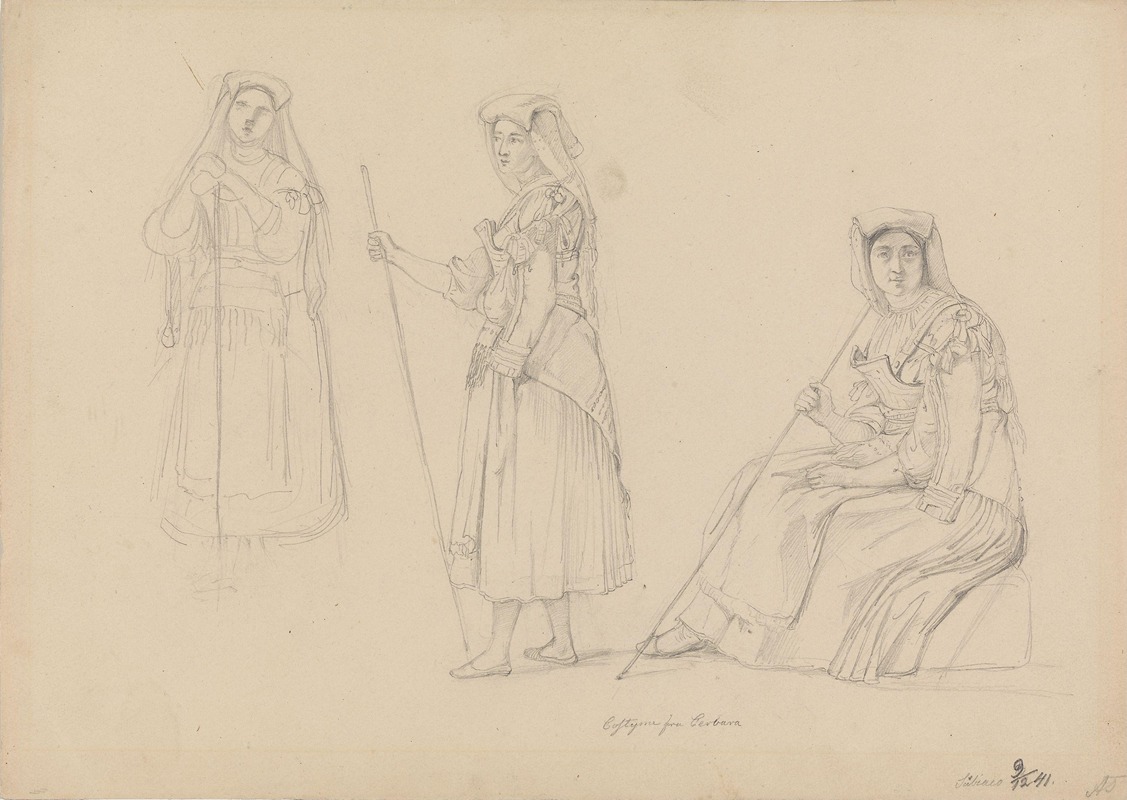
Kvinner i kostyme fra Cerbara, Subiaco
A hand-painted replica of Adolph Tidemand’s masterpiece Kvinner i kostyme fra Cerbara, Subiaco, meticulously crafted by professional artists to capture the true essence of the original. Each piece is created with museum-quality canvas and rare mineral pigments, carefully painted by experienced artists with delicate brushstrokes and rich, layered colors to perfectly recreate the texture of the original artwork. Unlike machine-printed reproductions, this hand-painted version brings the painting to life, infused with the artist’s emotions and skill in every stroke. Whether for personal collection or home decoration, it instantly elevates the artistic atmosphere of any space.
Adolph Tidemand was a prominent Norwegian painter in the 19th century, known for his detailed and culturally rich depictions of Norwegian life and traditions. One of his lesser-known works is "Kvinner i kostyme fra Cerbara, Subiaco," which translates to "Women in Costume from Cerbara, Subiaco." This painting is part of Tidemand's broader body of work that often focused on capturing the essence of regional costumes and the everyday life of people, not only in Norway but also in other parts of Europe.
Adolph Tidemand was born on August 14, 1814, in Mandal, Norway. He studied at the Academy of Art in Copenhagen and later in Düsseldorf, Germany, which was a significant center for art education at the time. Tidemand became a central figure in the Düsseldorf school of painting, which emphasized detailed realism and often focused on historical and genre scenes. His works are characterized by their attention to detail and the ability to convey the cultural and social aspects of the subjects he painted.
"Kvinner i kostyme fra Cerbara, Subiaco" is an example of Tidemand's interest in ethnographic subjects. The painting depicts women dressed in traditional costumes from the region of Cerbara, near Subiaco in Italy. Subiaco is a town with a rich history, located in the Lazio region, and is known for its picturesque landscapes and historical significance, including its association with St. Benedict and the Benedictine Order.
Tidemand's interest in capturing traditional costumes and local customs was part of a broader 19th-century trend where artists and scholars sought to document and preserve cultural heritage amidst the rapid changes brought about by industrialization and modernization. This painting reflects Tidemand's dedication to portraying the authenticity of regional attire and the dignity of the people wearing them.
The painting is executed with Tidemand's characteristic attention to detail, capturing the intricate designs and vibrant colors of the costumes. His ability to depict the textures of fabric and the play of light on different materials adds depth and realism to the scene. The women in the painting are portrayed with a sense of grace and poise, reflecting Tidemand's respect for his subjects and his skill in portraiture.
While "Kvinner i kostyme fra Cerbara, Subiaco" may not be as widely recognized as some of Tidemand's other works, such as "Haugianerne" or "Brudeferden i Hardanger," it remains an important piece within his oeuvre. It exemplifies his commitment to documenting cultural diversity and his ability to convey the beauty and complexity of traditional life through his art.
Adolph Tidemand's works, including this painting, continue to be appreciated for their historical and cultural significance. They offer valuable insights into the 19th-century European life and the artist's role in preserving cultural heritage through visual art. Tidemand passed away on August 25, 1876, but his legacy endures through his contributions to Norwegian art and his influence on subsequent generations of artists.






